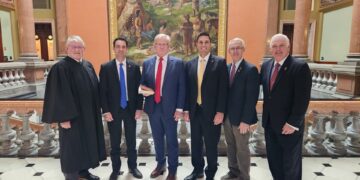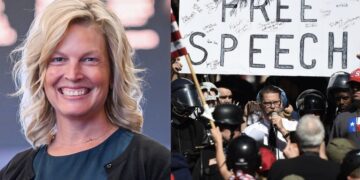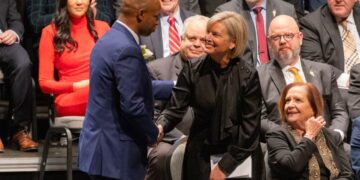The forced union fee set-up is back at the Supreme Court. Twenty-two states allow government employees to opt out of contributing to their union’s political activities while allowing public sector unions to charge them agency fees for representation. That arrangement supposedly finds the sweet spot between protecting employees’ First Amendment rights to not fund messages with which they disagree and enabling unions to prevent free riders on their representation.
But, as Daniel DiSalvo observes, it’s never been that simple because both collective bargaining and political campaigning are directed at government. And everything that a public employee union would bargain over also falls into the political sphere. Thus, DiSalvo estimates, in the states with the agency fee set-up, 20 percent to 30 percent of public sector workers are funding political messages with which they disagree.
The case Janus v. American Federation of State, County, and Municipal Employees, now before the Supreme Court, presents these points while challenging the agency fee set-up on First Amendment grounds. The unions, writes DiSalvo, are fearful of a loss for a good reason:
The general result of public-sector unions’ outsize influence in politics over the last 30 years, especially at the state and local levels, is ever-larger and more expensive government. Bigger government means more jobs and money for unions, of course, but in places where unions are strong, public finances tend to be in rough shape. Research by political scientists Sarah Anzia of the University of California at Berkeley and Terry Moe of Stanford University shows that unions increase the cost of government by boosting the salaries and benefits of public workers. My own research finds that strong unions drive up liabilities for other post-employment benefits (OPEB), which consist mainly of retiree health insurance. Higher salaries and generous benefits yield higher government debt and higher interest rates on state and local bonds. Loosening the grip of public-sector unions on some state and local governments could thus create the political breathing room that policymakers need in order to address long-festering fiscal problems in some of the nation’s most populous states and cities.
Public-sector unions are powerful political actors because they’re organized—largely by government, which solves the unions’ collective-action problem by forcing all workers to pay them. Government eliminates competition among unions by designating a single union as the exclusive representative. It incentivizes workers to join unions by permitting agency fees. It subsidizes unions by collecting workers’ dues and fees. It provides “release time” for workers to become union leaders, while keeping their jobs.
In sum, these unions have gotten organized not because public workers demanded it but mostly because government has encouraged such organization. In the process, government has trampled on some public workers’ rights and fueled the rise of a muscular progressive interest group. The result is an imbalance of political power, with disastrous fiscal consequences for many states and cities.
A rebalancing is in order. The Supreme Court has a chance to provide it.
[Daniel DiSalvo, “Judgement Day for Public Unions,” City Journal, Winter 2018]







